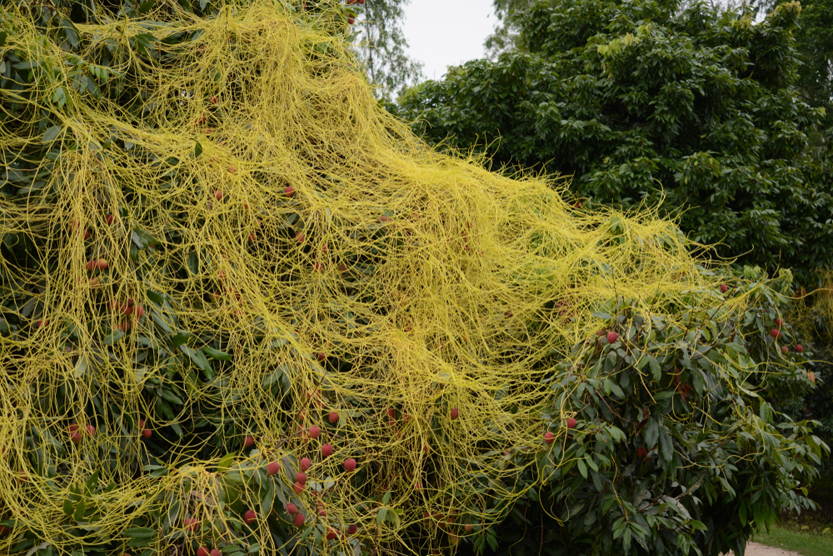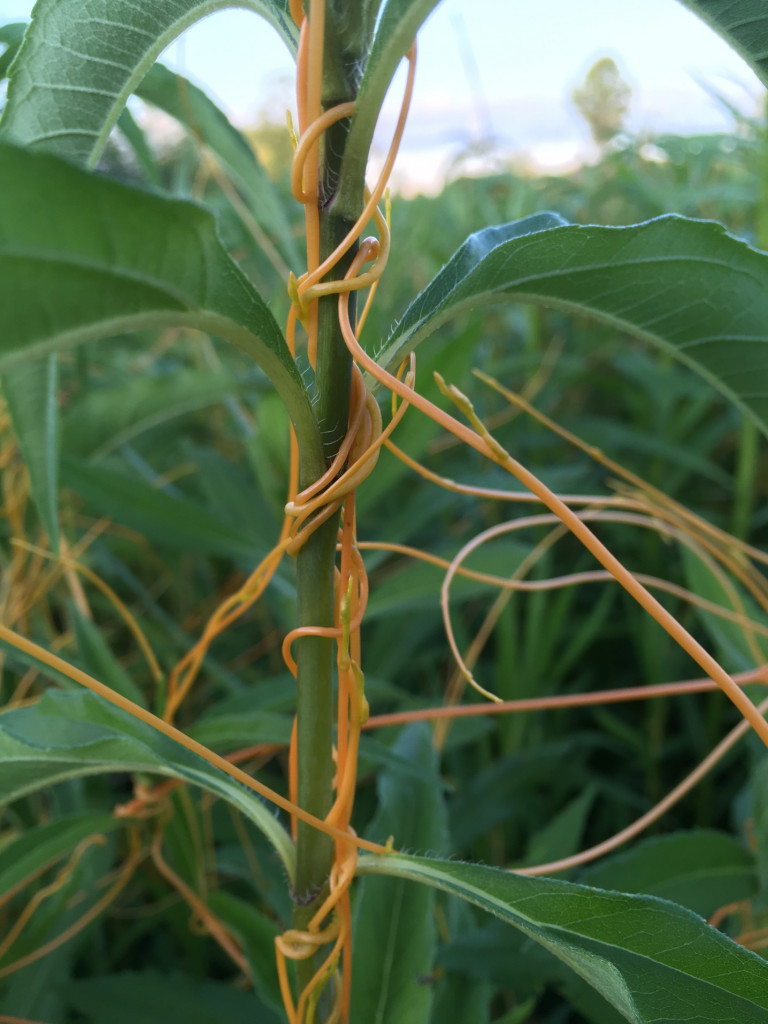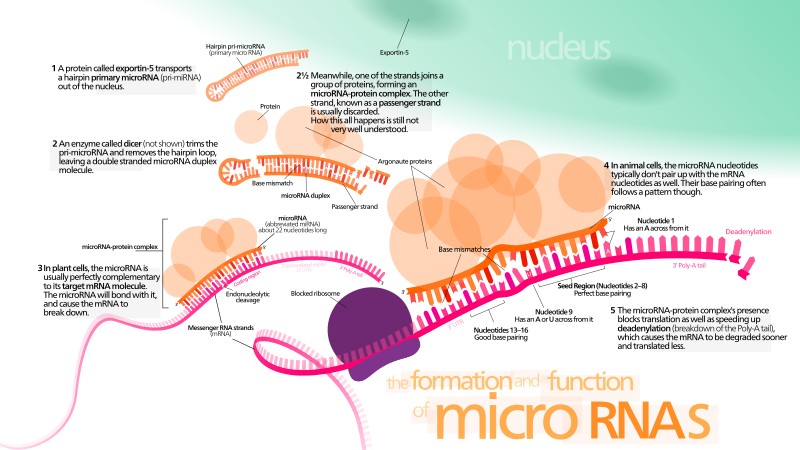Table of Contents (click to expand)
The dodder plant steals genes from host plants by attaching itself to the host plant with haustoria and then breaking down the host cell wall with an enzyme. The haustoria then forms a physical and physiological bridge between the dodder and the host. The dodder plant then takes in water and nutrients from the host plant and sometimes incorporates the host plant’s genetic information into its own genome.
Every class of organism is troubled by parasites that are ready to infest when their guard goes down. Mosquitos buzz their way into sucking our blood and then disappear into thin air. Other animals have tiny bugs and lice crawling over their body, making them itch frantically.
Even the smallest part of a living organisms isn’t safe from the wrath of parasites. Intracellular parasites, like viruses, can infect the living cells of all plants and animals.
Likewise, the plant kingdom has a variety of parasites that feed off plants to survive. In the case of dodders, they not only derive nutrition and water from their host, but also some genetic material.
The question is, why does the dodder plant steal genes? And how is it even possible?
What Is The Dodder Plant?
Dodder plants—belonging to the Cuscuta spp—are a leafless parasitic plant of the Convolvulaceae family. There are about 150 species of dodders around the world. They are classified as obligate stem holoparasites, as they rely entirely on the host for survival. Legumes, vegetables, ornamental plants and weeds can all serve as hosts for dodders.
They don’t have chlorophyll pigments, which are responsible for processing food by photosynthesis. Instead, the stems of dodders have teeth-like suckers called haustoria that attach themselves to the chosen host plant. They often feed simultaneously from multiple host plants.

Once the dodder seedling establishes itself on the host plant, the lower part of the dodder (roots) withers away, breaking its connection with the soil. The upper portion of the plants grows rapidly, entwining around the stems and leaves of the host plant.
The haustoria plays a key role in the survival of dodders. A haustorium is a root-like structure in parasitic plants that penetrates the host to absorb water and nutrition.
According to a study, the haustorium penetrates the surface of the host plant using mechanical force. It then releases an enzyme that degrades the host cell wall. Finally, an elongated cell called a hyphae emerges from the haustorium and forms a physical and physiological bridge between the dodder and the host. It establishes direct connections with the vascular tissue of the host plant—the xylem and phloem—to extract water and nutrients to feed itself. It acts as the lifeline to the dodder plant.

Also Read: How Do Some Common Insectivorous Plants Work?
How Does A Dodder Plant Steal Genes?
Most living organisms pass their genes from parent to offspring via reproduction, a process referred to as vertical gene transfer. It ensures genetic diversity and the integrity of the species.
However, some organisms are capable of transferring genes from one individual to another, without reproduction. This process is called horizontal gene transfer (HGT). It is seen in bacteria, unicellular eukaryotes and other microorganisms. In scientific terms, HGT is an asexual means of genetic transfer between two non-mating species. It plays an important role in the evolution of organisms.
For example, bacteria can develop antibiotic resistance through the transfer of genetic material via horizontal gene transfer.
HGT is not commonly observed in complex organisms like plants, and even if it is, the genetic material transferred is not used by the parasitic plant. However, a 2019 study found functional horizontal gene transfer (fHGT) in Cuscuta campestris (dodder).
Dodders receive macromolecules like mRNAs, proteins and genetic material from the host plant in the process of extracting nutrients through haustoria. They sometimes incorporate this genetic information into their genome. Research has found 108 genes added to the dodder’s genome via horizontal gene transfer.
Also Read: Can A Bacteria’s DNA Protect Plants From Insects?
Significance Of The Stolen Genes In Dodder
The 108 stolen genes are functional and contribute to various aspects in dodders. They aid in defense response, the structure of haustoria and the amino acid metabolism of dodders. Interestingly, one of the stolen genes also helps the parasite in silencing the defense gene of the host. The gene produces a small segment of RNA (known as micro RNA), which is sent back into the host as a silencing weapon. It allows the dodder to feed off the plant effortlessly.

Of the 108 stolen genes, 18 are present in all species of dodder. This suggests that an ancestor of the current dodder plants had stolen genes in the past. These genes may have contributed to the successful propagation of the parasitic Cuscuta.
That said, not all genes taken in during horizontal gene transfer are used by dodder. The study identified 42 regions in the dodder genome that had appeared due to HGT, but did not have any functional value for the plant.
During the horizontal gene transfer, the parasitic plant can receive a large amount of genetic material from the host. However, scientists suspect that dodders cannot filter all the genes they receive. Through natural selection, the useless segments are filtered out, while the functional ones remain.
Conclusion
Further study will reveal more about the nature of horizontal gene transfer between the host and the parasitic plant. Researchers are currently investigating the mechanism behind the transfer of genetic material from host to parasite, and hope to determine if the gene transfer can also occur from parasitic plants back to their host!
How well do you understand the article above!

References (click to expand)
- Yang, Z., Wafula, E. K., Kim, G., Shahid, S., McNeal, J. R., Ralph, P. E., … dePamphilis, C. W. (2019, July 22). Convergent horizontal gene transfer and cross-talk of mobile nucleic acids in parasitic plants. Nature Plants. Springer Science and Business Media LLC.
- Parasitic plants use stolen genes to make them better parasites. The Pennsylvania State University
- The dodder you never wanted. Michigan State University
- Kaiser, B., Vogg, G., Fürst, U. B., & Albert, M. (2015, February 4). Parasitic plants of the genus Cuscuta and their interaction with susceptible and resistant host plants. Frontiers in Plant Science. Frontiers Media SA.
- Zhang, Y., Wang, D., Wang, Y., Dong, H., Yuan, Y., Yang, W., … Li, Z. (2020, January 3). Parasitic plant dodder (Cuscuta spp.): A new natural Agrobacterium-to-plant horizontal gene transfer species. Science China Life Sciences. Springer Science and Business Media LLC.
- Aubin, E., El Baidouri, M., & Panaud, O. (2021, August 21). Horizontal Gene Transfers in Plants. Life. MDPI AG.
